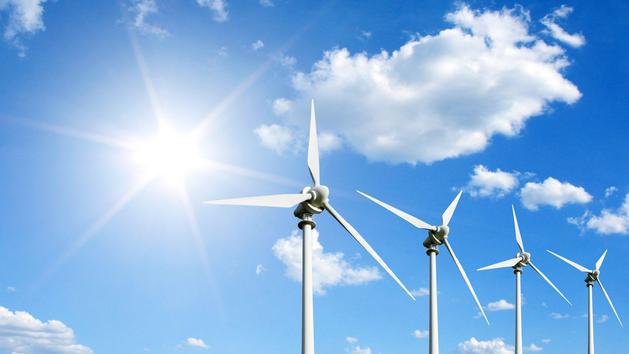Maxence Cordiez is an engineer in the energy sector.
In September, France was a net importer of electricity.
According to the RTE electricity grid operator, it imported 717 GWh more than it exported, which is equivalent to the consumption of a country like Estonia.
This situation is particularly atypical.
Indeed, France is usually the leading electricity exporter in Europe (ahead of Germany) thanks to the low variable costs of its production park (nuclear, hydraulic, wind and solar) which make it particularly competitive.
Read also:
Electricity sold off briefly at negative prices
Many voices have explained this situation by the closure in February and June of the two reactors at the Fessenheim plant.
While this decision certainly contributed to the electricity supply tensions, we will see that what happened in September goes well beyond the mere absence of Fessenheim.
The Covid led to the postponement of some maintenance work
Since the beginning of the year, it will have escaped no one that France and the rest of the planet are facing a pandemic.
The first confinement disrupted many sectors of activity, including the maintenance of nuclear power plants.
Normally, the plants follow a precise maintenance schedule spread over late spring and summer (when demand is lowest), to be available when demand is highest in winter.
With the confinement, the maintenances fell behind schedule and EDF had to review its schedule.
It is indeed better to import electricity in September than to have to cut the current in January.
As the winter period remains the most tense for electricity supply, EDF had to concentrate its maintenance work - and therefore reactor outages - on the end of the summer to maximize the availability of the nuclear fleet this winter.
It is indeed better to import electricity in September than to have to cut the current in January.
Thus, the nuclear power available during the first three weeks of September was only 25-30 GW when it was 35-40 GW in 2019, [according to RTE's eco2mix site.
Without wind, wind turbines work less well ...
With the continuous increase in wind power capacities in France (16.7 GW installed), one could have imagined that they would help get through this difficult episode.
However, wind turbines need wind to generate electricity.
However, the first three weeks of September were particularly windy.
Read also:
Electricity: are we at risk of power cuts this winter?
During the first two weeks, again according to RTE's eco2mix site, wind production did not exceed 3.1 GW, or 19% of the total installed wind capacity.
The situation improved slightly during Week 3 when power peaked at 8.2 GW on Thursday, but it was not until the end of Week 4 that stronger winds allowed it to exceed 12 GW (up to 'to a relapse at the beginning of the 5th week).
And Fessenheim in all of this?
The situation which led France to import electricity in September goes well beyond the mere closure of the Fessenheim plant.
However, each time that the supply will experience tensions in the coming years, one will be entitled to wonder what the situation could have been if the 1.8 GW of Fessenheim had not been closed.
The greenhouse gas emissions that could have been avoided every year if the Alsatian power station had remained in service are of the order of 6 to 10 million tonnes of CO2 equivalent.
Beyond the issue of security of supply, each time fossil fuel (coal or gas) generating capacities are called up in France or in neighboring countries (which is the case permanently), we can say that their production could have been reduced from that of Fessenheim.
The greenhouse gas emissions that could have been avoided every year if the Alsatian power station had remained in service are in the order of 6 to 10 million tonnes of CO2 equivalent.
Lessons to be learned from the September situation
The management of the Covid pandemic reminds us that we cannot have an electricity park sized as accurately as possible, at the risk that the slightest unforeseen event will destabilize it.
We need to have margins.
However, this is no longer the case.
In the words of RTE, the system is “
balanced but without margin, until 2020, due to the closure of part of the French thermal production means, in recent years
.”
This episode should also draw our attention to the fact that the security of electricity supply can only marginally rely on weather-dependent capacities: there is not necessarily wind or sun when we need electricity.
A country like France needs electricity production capacities available on demand and, for the climate, they must be low carbon, therefore hydroelectricity and nuclear.
Closing Fessenheim was a deleterious decision on both counts.
Read also:
EDF plans to commission a new nuclear storage pool in 2034
Now, even with the measures put in place by EDF to maximize the availability of the nuclear power plant this winter, the coming months may be tense, especially in the event of extreme cold.
The new confinement in force since Thursday, October 29, should not help.
Hence the usefulness of having margins… that we no longer have.




